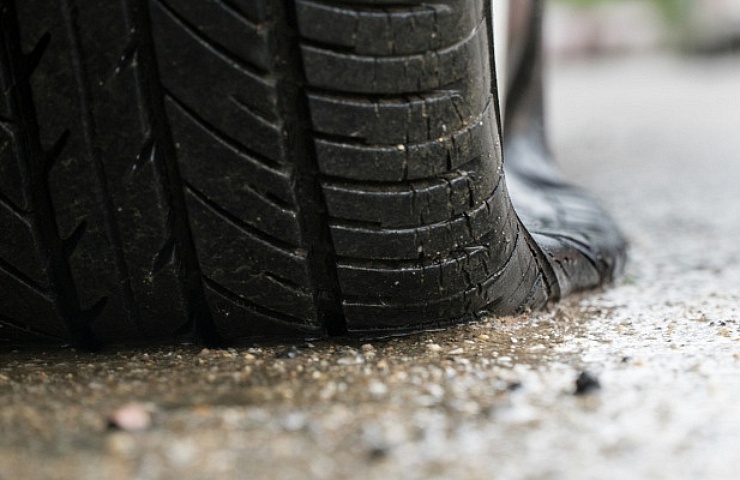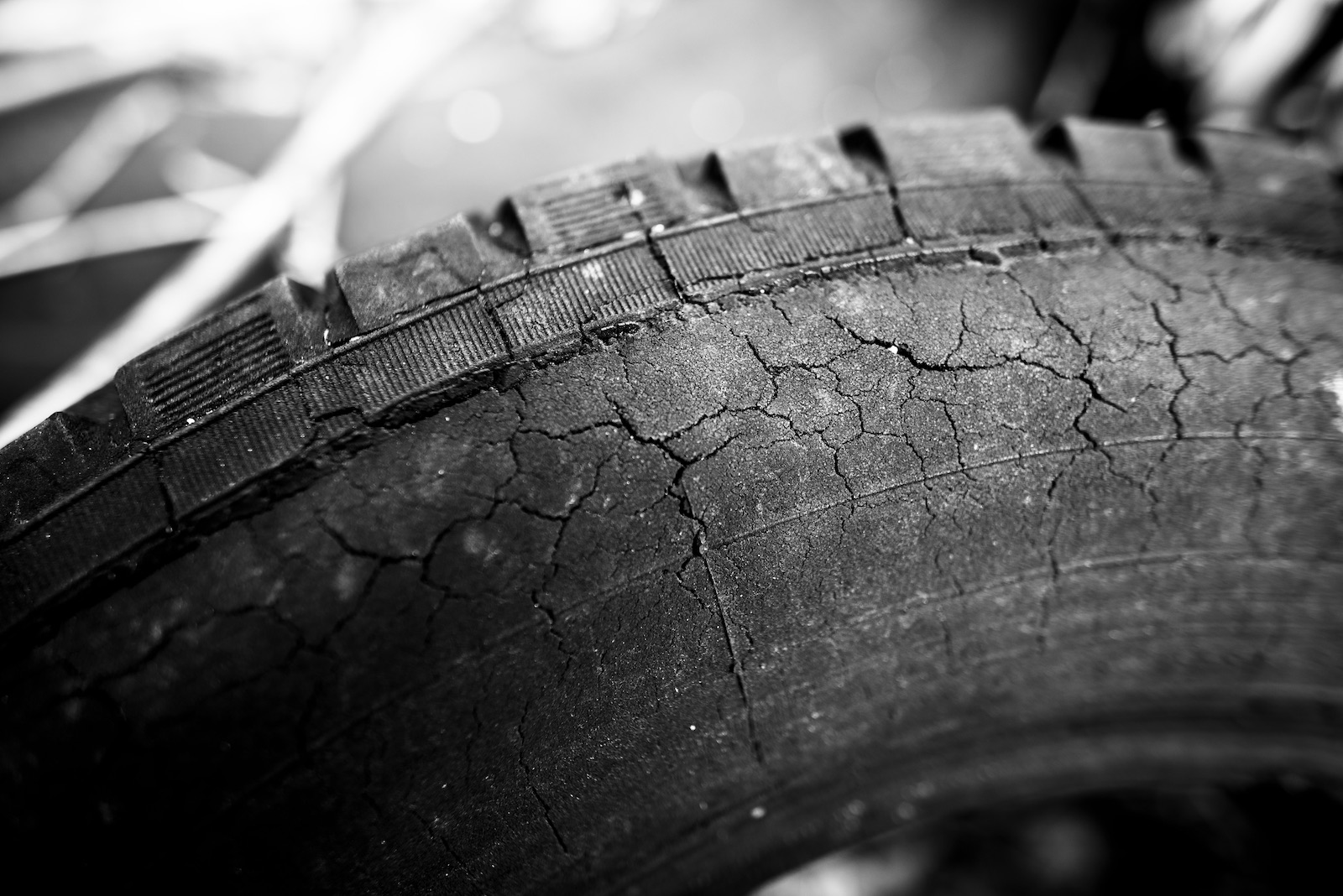Contents
Causes of Dry Rot in Tires
Sidewall weathering is the technical name for dry rot on tires. This term describes the damage on the outside of the tire that causes cracks in the sidewall and tread. It’s common if the tires have been exposed to any extreme.
Dry rot leads to brittle tires. The internal layers can also be damaged.
Here are the top causes of dry rot:
- Exposure to UV rays (sunlight)
- Use in extremely high or low temperatures
- Exposure to corrosive or abrasive chemicals
- Driving with low tire pressure
- Storing the vehicle for too long without driving
How to Spot Dry Rot in Tires
You don’t need special equipment to discover if tires have dry rot. Here are a few signs to watch for.
- Broken surface. Dry rot tires have a more rigid surface than good tires. The tire surface becomes brittle, and touching it could cause rubber parts to fall off.
- Sidewall cracks. Cracks appear on the sidewall. Left alone, they extend further until they cover a larger area.
- Tread cracks. It can be hard to see cracks in the tread, especially if there’s plenty of tread left on the tire. However, severe cracking can move from the sidewall to the tread.
- Discoloration. Tires are black. However, after exposure to the sun and other elements, they can fade to gray. After the tires are faded, you may also notice more cracking.
Is It Okay to Drive with Dry-Rotted Tires?

If you want to save the tires, it’s best to have them looked at as soon as you notice the dry rotting.
What Should Be Done With Dry-Rotted Tires?
Some drivers repair dry-rotted tires if the damage is minimal. In this case, you would apply a professional sealant to the cracks to prevent them from worsening. This repair is only good on minimally damaged tires as a temporary fix, so don’t continue driving on them.
However, most professionals don’t recommend attempting to repair rotted tires. Air will escape through the cracks, making it nearly impossible to keep the tires inflated. The unnatural expansion of the rubber also starts to break the tire apart so it could blow out.
There’s also the chance for the tread to separate from the rest of the tire. These situations can lead to an accident.
Shop now for tiresRemember that you may need to replace two tires, even if only one is dry-rotted. If the matching tire doesn’t have enough tread to make it comparable to the new tire, the technician will recommend replacing both.
Preventing Dry Rot in Tires
With basic tire care and maintenance, you can prevent dry rot and extend the life of the rubber.
Here are a few suggestions to keep in mind.
Keep Tires Inflated
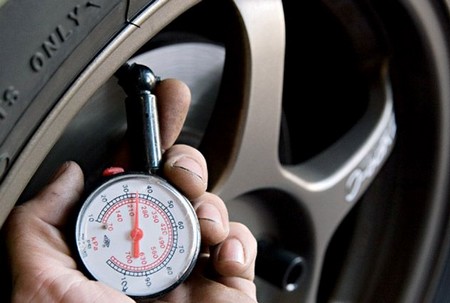
Perform Regular Inspections
The key to maintaining healthy tires is to check them often. You can perform an inspection during your monthly air pressure check. You should have a professional inspect if you notice any bulging, cracks, or discoloration.
Park Out of the Sun
Exposure to UV rays is a leading cause of dry rot. When you park, pay attention to your surroundings. If you consistently park your car in the hot sun, the UV rays will damage the tire tread, exterior paint, and interior surfaces.
When possible, park in a shaded area. It’s best to park your vehicle in a garage, but not everyone has this opportunity. If you must park outside, you may consider getting a car cover to protect the vehicle from UV rays and avoid dry rot in the tires.
Clean the Car
Cleaning your vehicle makes your car look good and helps protect the vehicle’s exterior paint and the tires. By removing dirt and grime, you keep the vehicle in pristine condition. Use a mild cleaner and a soft, lint-free cloth. Ensure you rinse all the soap off when you are done to prevent the sun from baking on any of the cleaners.
Shop now for foam cannons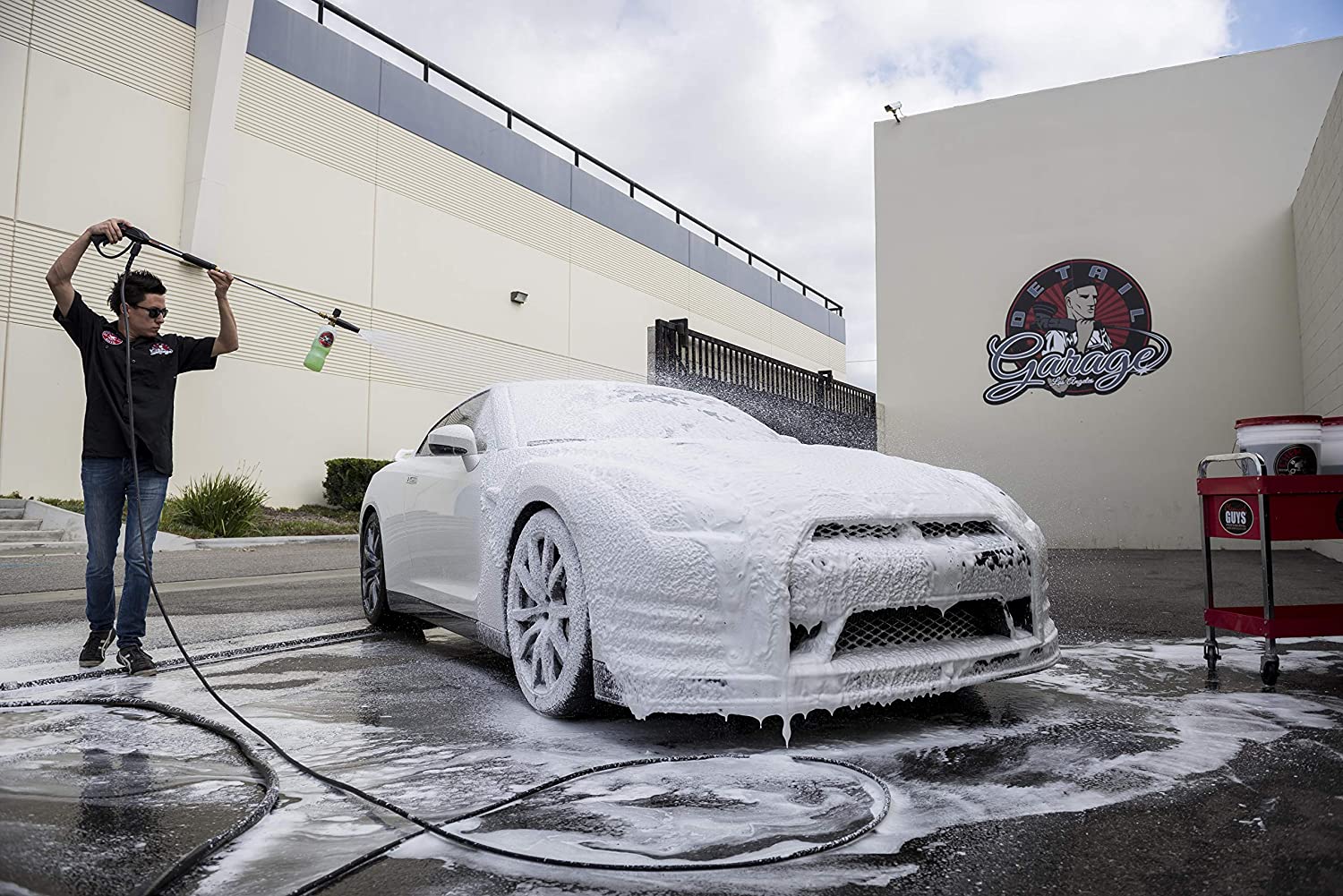
Foam cannons produce ample suds to lift dirt. Make sure you rinse your tires thoroughly.
Avoid Using Harmful Products
Before you use any products on the tires, read the ingredients. Some tire protectants and cleaning agents have harmful chemicals that could dry out the tire. For example, avoid using agents that include petroleum-based ingredients. These products are notorious for degrading the weathering agents on tires that prevent cracking.
Avoid Overloading the Vehicle
Manufacturers outfit tires on your vehicle to match its load capacity. If you exceed the intended weight, you stress the tires more. Over time, this weight cracks the tires and leads to premature failure.
Store Your Vehicle Properly
There are some simple tips if you don’t drive your vehicle often or need to store it.
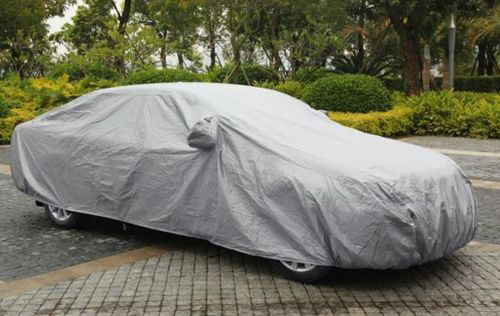
If you park outdoors for a long period of time, a car cover can provide protection from harmful UV rays.
- Try to remove weight from the tires when possible. If you can jack up the car and secure it on jack stands, you will remove the stress from the vehicle. This will help prevent dry rot in the tires, while stored.
- Keep the vehicle in a covered location, out of direct sunlight.
- Use a car cover if you can’t park in a garage.
- If you cannot remove weight off the tires, move the vehicle slightly every three months to shift some of the weight.
- Keep the vehicle in a dry, clean location with no chemicals on the ground.
It’s also essential to store seasonal tires properly. When you remove snow tires for warmer weather, keep them mounted on the wheels and off the ground. Consider installing hooks to hang your tires in the garage.
Shop now for tires
